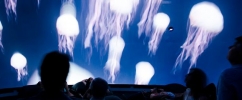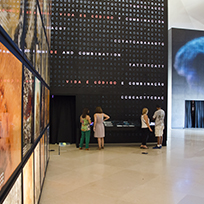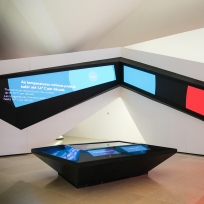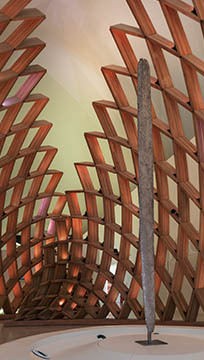Anthropocene

After we learn where we come from (the Cosmos), and about how we fit into the environment of the Earth, it is time to ponder where we, the human species, are now. Studies show the world’s population will reach 10 billion by the year 2060. The amount of change likely to occur over the next 50 years will be greater than that of the past 10,000 years. The impact of man’s activities on the planet and on geologic processes is shown in the Anthropocene, the era of the human, the central experience of the Museum of Tomorrow, both conceptually and architectonically. The exhibition aims to show the significant ways mankind is affecting the planet, and that while man is causing long-lasting changes, the choices we make today can shape the future.
Six totems, each ten meters tall and three meters wide arranged in a circle reminiscent of Stonehenge, serve as the screen for a film of dramatic scenes of the broadening extent of man’s impac on the Earth. Real-life images and scientific data from across the globe illustrate man’s actions and the planet’s reactions to them. Scenes show oil extraction, production of trash, technological advances,telecommunications, urban population growth, agriculture, water pollution and food waste. Data is continually updated as information is released by scientific research institutions. The exhibit aims to inspire visitors to act. “The power of the Anthropocene is in each one of us; the impact is both individual and shared. Every action counts,” says Vincente Kubrusly of Conspiração Films, co-director (with Melissa Flores) of the film.
Visitors can look deeper into these matters in four “caves” with videos (produced by TV Zero) and interactive displays (by 32 Bits) that portray the causes and effects of the Anthropocene era, as well as the impacts of expansion in global commerce. Screens show important advances that have shaped society, such as the discovery of penicillin and the invention of movies, or the efforts by governments and civil society to reverse the damages caused by man’s actions.







